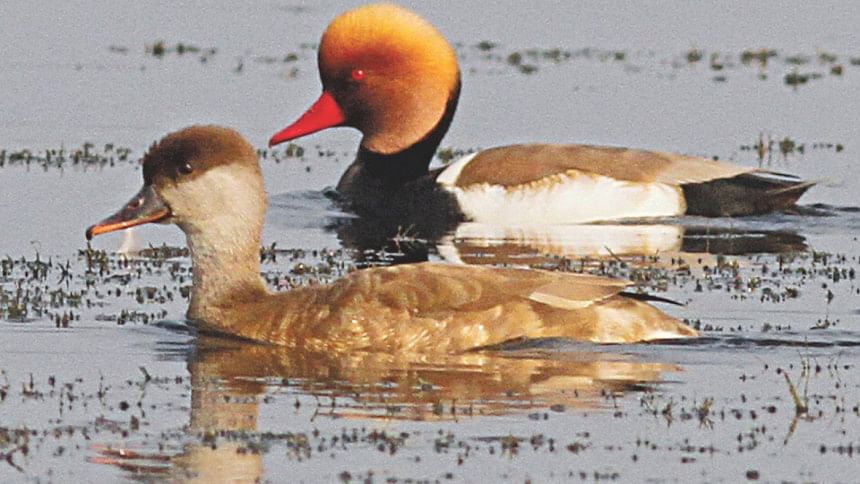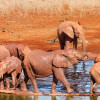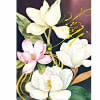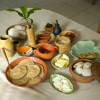Nature Quest: Courtship pageant in Tangua

Tangua haor is a mini ocean during monsoon. But in winter much of the water is gone and the haor turns into a maze of interconnected wetlands called beels. Once away from the muddy shores overgrown with reeds, one can see through the clear beel water a magnificent green carpet of plants at the bottom. This garden, hidden underneath the water, is visited by thousands of ducks during the winter months every year.
The ducks live on the soft new leaves; a ton of these leaves is needed for every ten thousand ducks a day. In return, the beels get nitrogen-rich fertilisers as duck-droppings, half a ton a day from the same number of ducks. Migratory ducks stay in a beel only as long as it can produce enough new leaves for them. It is somewhat like the plucking of tea leaves in a tea garden. You pluck only so long as the garden can produce new leaves. When the plants begin to grow less with the water going too low or too high, the ducks leave the place and move on.
The haor is interesting to bird watchers only in winter. We started our journey from Sunamganj town. An auto-rickshaw took us to Solemanpur ghat in about two and a half hours. From there it's only an hour to the haor by an engine boat. The twisting river named Baulai has nearly a hundred S-turns between Solemanpur and the haor. We do not hope to gain any sense of direction after a couple of turns. Rows of 'koroch' trees grow on both banks and beels abound beyond the tree lines.
Ducks, cormorants, egrets and gulls crisscross the sky in the morning and the evening. Very few boats ply the river since importation of coal and pebble from Meghalaya has decreased. At the bend of Matian haor, a canal draining the water of Tangua haor joins the Baulai river. Here we take the canal to enter the haor beyond the fishers' village named Golabari.
We paddle our boat gently as we leave Golabari behind. On our left is a shallow wetland good only for plankton-eaters and mud-sifters such as gargany and shoveller. On the right we can see the Chotainna beel, a bigger wetland with a lush green garden of submerged plants. This beel is full of coots and diving ducks better known as 'pochards'. These birds can dive several feet into the water to eat the plants and the slow-moving creatures such as mollusks.
On a good sunny day we can see in the gaggle of these divers an amazing line of red-crested pochards, large rubicund ducks with vermilion bills and graceful black necks. These are the males interested less in feeding and more in exhibiting their red and black regalia to impress the plain-brown females pretending to be unswervingly focused on feeding. This is an unforgettable sight to see. To watch one pompous male swaggering its red facade to a female is a spectacle; but to watch hundreds of red-heads floating on blue water is a treat from the gods!
Tourists who often enter the haor in engine boats say they saw a few ducks only. The fact, however, is that ducks, startled by the noise of the engine, either fly away or swiftly drift from the routes frequented by tourists. Without the help of binoculars, tourists cannot see catch glimpses of the ducks drifting to the far end of the beel and courting of the male pochards.

 For all latest news, follow The Daily Star's Google News channel.
For all latest news, follow The Daily Star's Google News channel. 








Comments